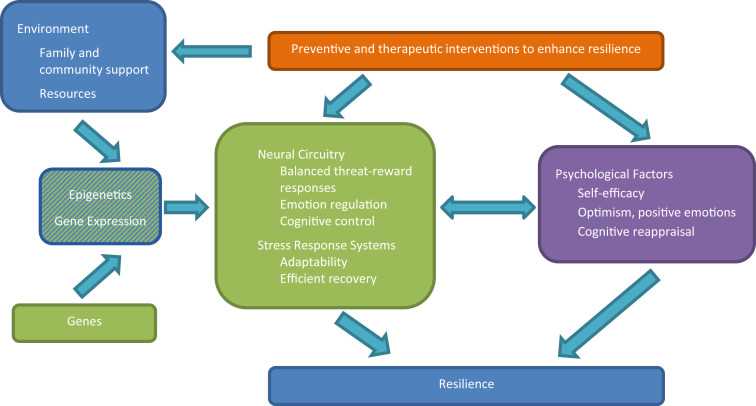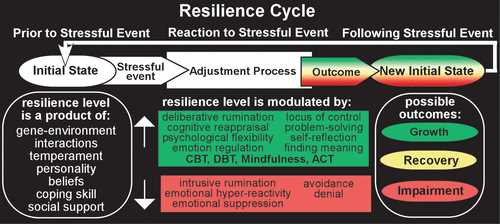
Resilience is the ability of individuals, communities, and organizations to adapt and thrive in the face of adversity. It is a crucial trait that allows us to bounce back from difficult situations and maintain our well-being. However, under extreme stress conditions, resilience can be severely tested.
Understanding resilience from a multilevel perspective is essential to comprehending the complex interplay between individuals, families, communities, and larger social systems. Resilience is not solely an individual trait; it is also influenced by the resources and support available at different levels of society.
At the individual level, resilience involves the ability to cope with stress, adapt to change, and maintain a positive outlook. It requires emotional strength, problem-solving skills, and the capacity to seek support when needed. However, resilience is not just about personal traits; it is also shaped by the stress factors individuals face and the support they receive from their environment.
From a multilevel perspective, resilience can also be understood as a product of interactions between individuals and their social networks, communities, and larger societal structures. The availability of resources, such as social support, economic opportunities, and access to healthcare, can greatly influence an individual’s ability to cope with stress and bounce back from adversity.
Understanding Resilience

Resilience is the ability to adapt and bounce back in the face of adversity. It is a multidimensional concept that can be understood from various perspectives. In the context of extreme stress conditions, resilience takes on a particularly significant role.
From an individual perspective, resilience refers to the capacity of an individual to withstand and recover from stressors. It involves the ability to effectively cope with challenges, maintain a positive outlook, and adapt to changing circumstances.
On a social level, resilience can be seen as the collective capacity of a community or society to withstand and recover from extreme stress conditions. This includes the ability to mobilize resources, provide support networks, and promote social cohesion.
From a psychological perspective, resilience involves the ability to regulate emotions, manage stress, and maintain mental well-being in the face of adversity. It encompasses factors such as self-efficacy, optimism, and problem-solving skills.
Resilience can also be understood from a biological perspective, which focuses on the physiological mechanisms that enable individuals to withstand and recover from stress. This includes factors such as genetic predisposition, neurobiological processes, and the role of stress hormones.
Overall, understanding resilience requires a multilevel approach that takes into account individual, social, psychological, and biological factors. By examining resilience from these different perspectives, researchers and practitioners can gain a comprehensive understanding of how individuals and communities can thrive under conditions of extreme stress.
Definition and Importance

Resilience, in the context of extreme stress conditions, refers to the ability of individuals, communities, and organizations to adapt, recover, and thrive in the face of adversity. It is a multilevel concept that encompasses various factors at the individual, interpersonal, and societal levels.
Resilience is of utmost importance in extreme stress conditions as it helps individuals and communities cope with and overcome the challenges they face. It enables individuals to bounce back from setbacks, maintain psychological well-being, and continue functioning effectively. At the community and organizational levels, resilience is crucial for maintaining social cohesion, ensuring continuity of services, and fostering recovery and growth.
Understanding and promoting resilience under extreme stress conditions is essential for building sustainable and robust systems that can withstand and recover from adversity. It involves recognizing the factors that contribute to resilience at different levels and implementing strategies to enhance resilience in individuals, communities, and organizations.
Factors Influencing Resilience

Resilience is the ability to adapt and bounce back from extreme conditions and stress. It is a complex concept that is influenced by various factors at different levels. These factors can be categorized into individual, social, and environmental levels.
- Individual Factors: Personal characteristics such as self-esteem, self-efficacy, and optimism play a crucial role in determining an individual’s resilience. People with high self-esteem and self-efficacy are more likely to perceive challenges as manageable and have a positive outlook, which enhances their ability to cope with extreme conditions.
- Social Factors: Social support from family, friends, and community is another important factor that influences resilience. Having a strong support network provides emotional support, practical assistance, and a sense of belonging, which can buffer the impact of extreme stress and help individuals recover more quickly.
- Environmental Factors: The physical and socio-economic environment in which individuals live also plays a role in resilience. Access to basic resources such as food, shelter, and healthcare, as well as stable employment and educational opportunities, can enhance an individual’s resilience by providing a foundation for stability and security.
It is important to consider these factors from a multilevel perspective when studying resilience. Understanding the interplay between individual, social, and environmental factors can provide insights into how to promote resilience in individuals and communities facing extreme conditions and stress.
Individual Level Resilience

Resilience is a crucial concept in understanding how individuals cope with extreme stress. At the individual level, resilience refers to the ability to adapt and bounce back from adversity. It involves the capacity to maintain a sense of well-being and function effectively in the face of challenging circumstances.
From a multilevel perspective, individual level resilience is influenced by various factors. These include personal characteristics, such as personality traits, cognitive abilities, and coping strategies. Additionally, social support networks, including family, friends, and colleagues, play a significant role in enhancing individual resilience.
One key aspect of individual level resilience is the ability to regulate emotions effectively. This involves recognizing and managing one’s emotions in a healthy and adaptive way. Individuals who possess strong emotional regulation skills are better equipped to handle stress and recover from traumatic experiences.
Another important factor in individual level resilience is the presence of a positive self-concept. Individuals who have a strong sense of self-worth and self-efficacy are more likely to bounce back from adversity. They are better able to maintain a positive outlook and persevere in the face of challenges.
Individual level resilience also involves the ability to engage in problem-solving and decision-making. Individuals who are able to analyze situations, generate effective solutions, and make informed decisions are more likely to overcome stressful circumstances. This cognitive flexibility and problem-solving skills contribute to individual resilience.
In conclusion, individual level resilience is a crucial aspect of coping with extreme stress. It is influenced by personal characteristics, social support networks, emotional regulation skills, self-concept, and problem-solving abilities. Understanding and promoting individual level resilience can help individuals thrive in the face of adversity and maintain their well-being.
Multilevel Perspective on Resilience

Resilience is a concept that is often discussed in the context of extreme stress. It refers to an individual’s ability to adapt and recover from difficult or challenging situations. However, resilience is not only a personal trait, but also a multilevel phenomenon that can be observed at different levels of analysis.
At the individual level, resilience can be understood as the ability to bounce back from adversity and maintain mental and emotional well-being. It involves the capacity to cope with stress, regulate emotions, and engage in problem-solving strategies. Individuals with high levels of resilience are more likely to exhibit positive psychological outcomes despite facing extreme stressors.
At the interpersonal level, resilience can be seen in the relationships and social support networks that individuals have. Strong social connections and supportive relationships can buffer the impact of stress and provide individuals with the resources they need to cope and recover. These relationships can provide emotional support, practical assistance, and a sense of belonging, all of which contribute to resilience.
At the community level, resilience can be observed in the collective response to extreme stress and adversity. Communities that are resilient have the ability to come together, mobilize resources, and support each other in times of crisis. This can involve community organizations, government agencies, and other stakeholders working together to provide assistance and support to those affected by extreme stressors.
At the societal level, resilience can be seen in the policies, infrastructure, and systems that are in place to address extreme stress and promote recovery. Societies that prioritize resilience invest in disaster preparedness, social safety nets, and mental health services. They recognize the importance of resilience in building a sustainable and healthy society.
In conclusion, resilience is a multilevel phenomenon that can be observed at the individual, interpersonal, community, and societal levels. Understanding resilience from a multilevel perspective allows for a comprehensive understanding of the factors that contribute to resilience under conditions of extreme stress. By recognizing and supporting resilience at all levels, we can promote well-being and recovery in the face of adversity.

I am Patrina de Silva, a psychologist and mental health blogger in Sri Lanka. After obtaining psychology degrees from the University of Colombo and Monash University, I returned home to work as a counselor while also starting the popular blog “Pressy but Happy” to provide advice on psychological issues. Over the past decade, my empathetic articles have made my blog a leading mental health resource in the country. In addition to writing, I maintain a private therapy practice, frequently volunteer counseling time, and conduct seminars, driven by my passion for destigmatizing mental illness and educating the public on the mind-body connection. I strive to be an influential voice in my field through my compassionate approach.
